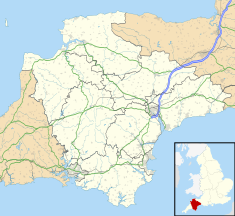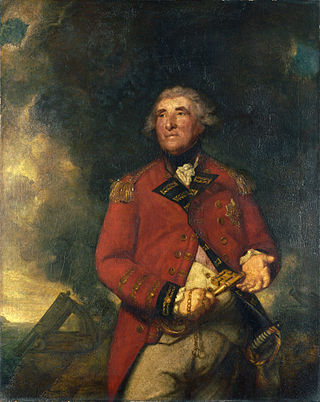
General George Augustus Eliott, 1st Baron Heathfield, was a Scottish officer of the British Army, who served in three major wars during the 18th century. He rose to distinction during the Seven Years' War when he fought in Germany and participated in the British attacks on Belle Île (France) and Cuba. Eliott is most notable for his command of the Gibraltar garrison during the Great Siege of Gibraltar, which lasted from 1779 to 1783, during the American War of Independence. He was celebrated for his successful defence of the fortress and decisive defeat of Spanish and French attackers.
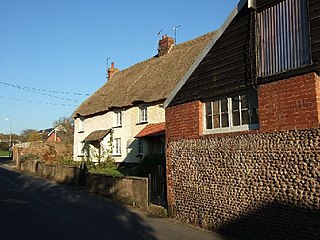
Woodbury is a village and civil parish in East Devon in the English county of Devon, 7 miles (11 km) south east of the city of Exeter. At the 2011 Census the village had a population of 1,605, and the parish had a population of 3,466. It lies on the east bank of the Exe Estuary, has borders – clockwise from the estuary – with the district of Exeter and then the parishes of Clyst St George, Clyst St Mary, Farringdon, Colaton Raleigh, Bicton and Lympstone. Woodbury is part of the electoral ward of Woodbury and Lympstone whose population at the 2011 Census was 5,260.

Trerice is an historic manor in the parish of Newlyn East, near Newquay, Cornwall, United Kingdom. The surviving Tudor manor house known as Trerice House is located at Kestle Mill, three miles east of Newquay. The house with its surrounding garden has been owned by the National Trust since 1953 and is open to the public. The house is a Grade I listed building. The two stone lions on the front lawn are separately listed, Grade II. The garden features an orchard with old varieties of fruit trees.

Buckland Abbey is a Grade I listed 700-year-old house in Buckland Monachorum, near Yelverton, Devon, England, noted for its connection with Sir Richard Grenville the Younger and Sir Francis Drake. It is owned by the National Trust.

There have been four baronetcies created for people with the surname Drake, three in the Baronetage of England and one in the Baronetage of Great Britain.

Sir Henry Pollexfen of Nutwell in the parish of Woodbury, Devon, was Lord Chief Justice of the Common Pleas.
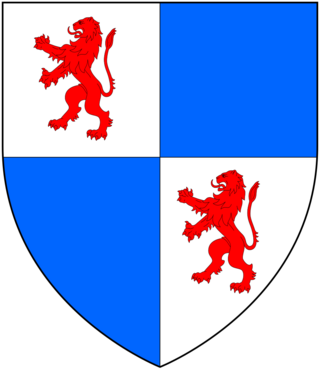
John Pollexfen (1636–1715), of Walbrooke House in the parish of St Stephen Walbrook, City of London and of Wembury House in Devon, was a merchant, a courtier to Kings Charles II and William III, and a political economist who served four times as a Member of Parliament for Plympton Erle in Devon, in 1679, 1681, 1689 and 1690. He was opposed to the monopoly of the East India Company.
The Fuller-Eliott-Drake Baronetcy, of Nutwell Court, Buckland Abbey, or Monachorum, Sherford, and Yarcombe in the County of Devon, was a title in the Baronetage of the United Kingdom. It was created on 22 August 1821 for the soldier Thomas Fuller-Eliott-Drake, with remainder in default of male issue of his own to his next two younger brothers, William Stephen Fuller and Rose Henry Fuller, and their male issue. Born Thomas Fuller, he was a grandson of George Augustus Eliott, 1st Baron Heathfield, and grand-nephew of the last Drake Baronet of Buckland, and adopted the additional surnames of Eliott and Drake upon his inheritance of Buckland Abbey and Nutwell Court from the second Lord Heathfield in 1813. He was succeeded according to the special remainder by his nephew, the second Baronet, a son of the younger of his two brothers, who had also adopted the additional surnames. The title became extinct upon his death without a male heir in 1916. The second Baronet's only child married the third Baron Seaton, who also adopted the Eliott and Drake surnames.

Sir Henry Ford, of Nutwell in Devon was four times MP for Tiverton between 1664 and 1685 and twice Secretary to the Lord Lieutenant of Ireland, 1669–70 and 1672–73.

Hon. Mark George Kerr Rolle, of Stevenstone, St Giles in the Wood, Devon, was High Sheriff of Devon in 1864, a DL of Devon and High Steward of Barnstaple.

Nutwell in the parish of Woodbury on the south coast of Devon is a historic manor and the site of a Georgian neo-classical Grade II* listed mansion house known as Nutwell Court. The house is situated on the east bank of the estuary of the River Exe, on low-lying ground nearly contiguous to the water, and almost facing Powderham Castle similarly sited on the west bank. The manor was long held by the powerful Dynham family, which also held adjacent Lympstone, and was according to Risdon the site of their castle until John Dynham, 1st Baron Dynham (1433–1501), the last in the male line, converted it into "a fair and stately dwelling house".
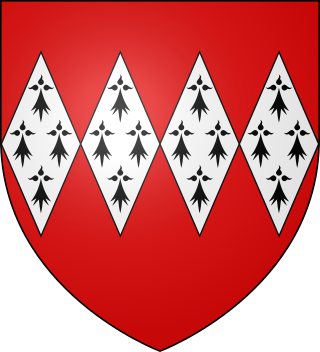
Sir John Dinham (1406–1458) was a knight from Devonshire, England. His principal seats were at Nutwell and Kingskerswell in South Devon and Hartland in North Devon.

Sir Edmund Prideaux, 1st Baronet (1554–1628), of Netherton in the parish of Farway, Devon, was a Councillor at Law and Double Reader of the Inner Temple and was created a baronet on 17 July 1622. He purchased the estate of Netherton where in 1607 he built a new mansion house, known today as Netherton Hall, a grade II listed building. He was one of John Prince's Worthies of Devon.
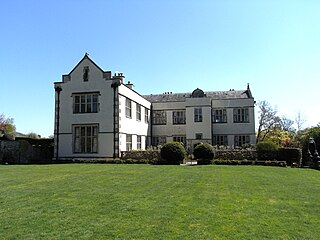
Netherton in the parish of Farway in Devon is an historic estate situated about 3 1/2 miles south-east of Honiton. The present mansion house known as Netherton Hall was built in 1607 in the Jacobean style, restored and rebuilt 1836-44, and is a Grade II listed building.

Soldon in the parish of Holsworthy Hamlets, Devon, England, is a historic estate, a seat of the Prideaux family. The manor house is a grade II listed building dating from the mid-16th century with later alterations. It was sold in 2014 as an eight bedroomed house with an acre and a half of grounds for an asking price of £750,000.
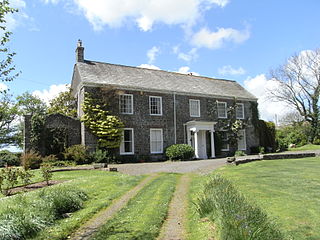
Thuborough in the parish of Sutcombe, Devon, England, is an historic estate, formerly a seat of a branch of the Prideaux family, also seated at Orcharton, Modbury; Adeston, Holbeton; Soldon, Holsworthy; Netherton, Farway; Ashburton; Nutwell, Woodbury; Ford Abbey, Thorncombe, all in Devon and at Prideaux Place, Padstow and Prideaux Castle, Luxulyan, in Cornwall. The present mansion house, comprising "Thuborough House" and "Thuborough Barton", the north-east block, is a grade II listed building.
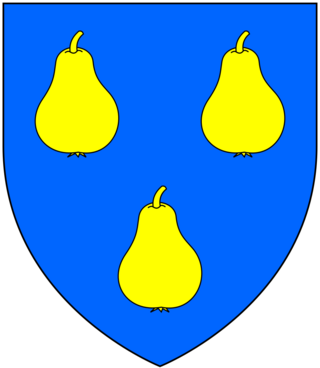
Sir Hugh Stucley (1496–1559) was the lord of Affeton in Devon, and Sheriff of Devon in 1545. His third son was Thomas Stukley, known as "The Lusty Stucley".
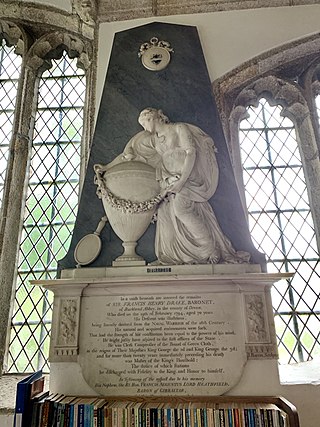
Sir Francis Henry Drake, 5th Baronet was an English Master of the Household and Member of Parliament.

Sherford is a village and former civil parish and manor, now in the parish of Frogmore and Sherford, in the South Hams district, in the county of Devon, England. It is situated about 2+1⁄2 miles (4 km) east of the town of Kingsbridge. It should not be confused with the new town Sherford to be built on the outskirts of Plymouth, about 18 miles (29 km) to the north-west. The parish church is dedicated to Saint Martin of Tours. In 1961 the parish had a population of 258. On 1 April 1986 the parish was abolished and merged with parts of South Pool and Charleton to form "Frogmore and Sherford". Sherford was recorded in the Domesday Book as Sireford/Sirefort/Sireforda.

South Milton is a village and civil parish in the South Hams district, in the county of Devon, England, situated on the south coast about 2 miles south-west of Kingsbridge. The civil parish includes the hamlets of Sutton, south of the village, and Upton, north of the village. In 2021 the parish had a population of 371.

